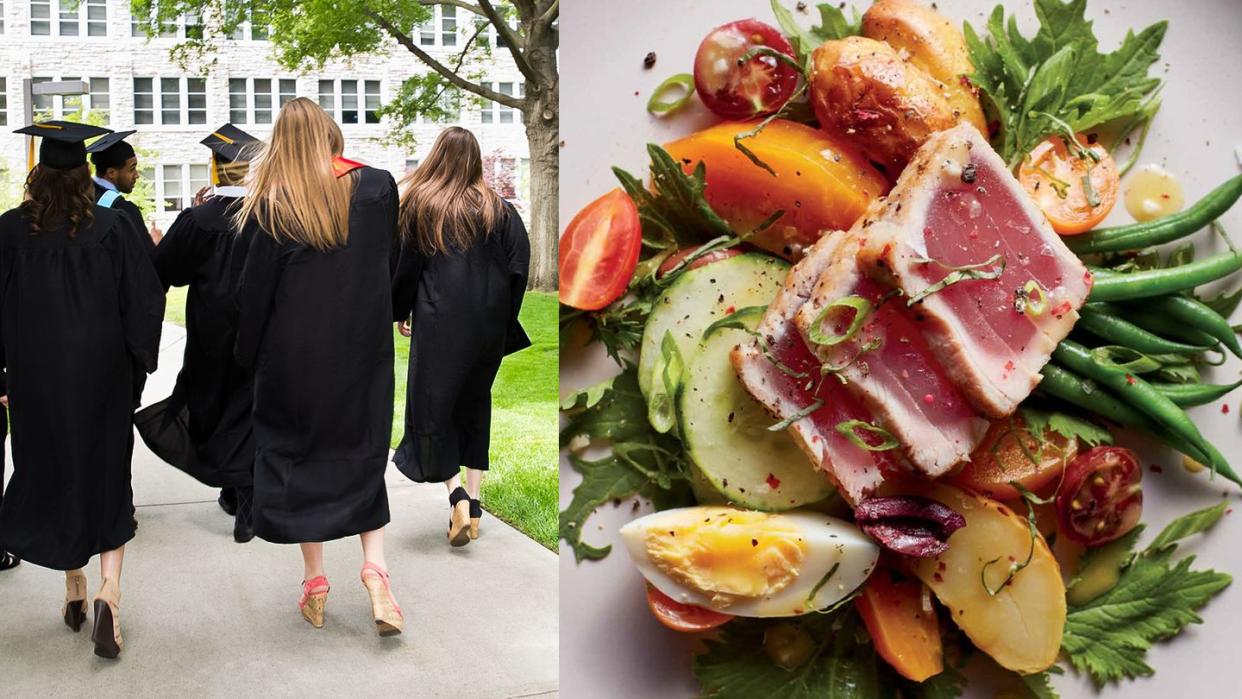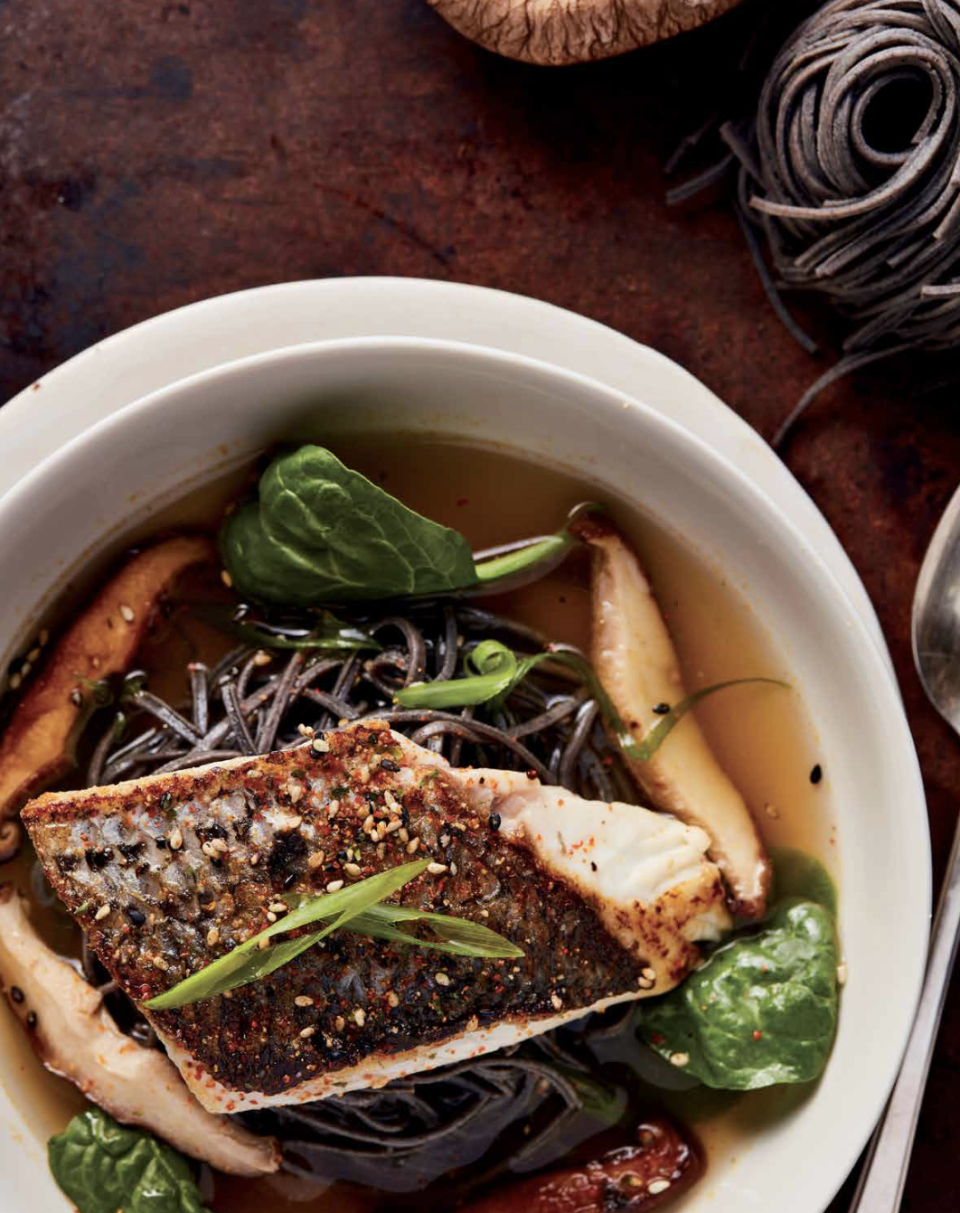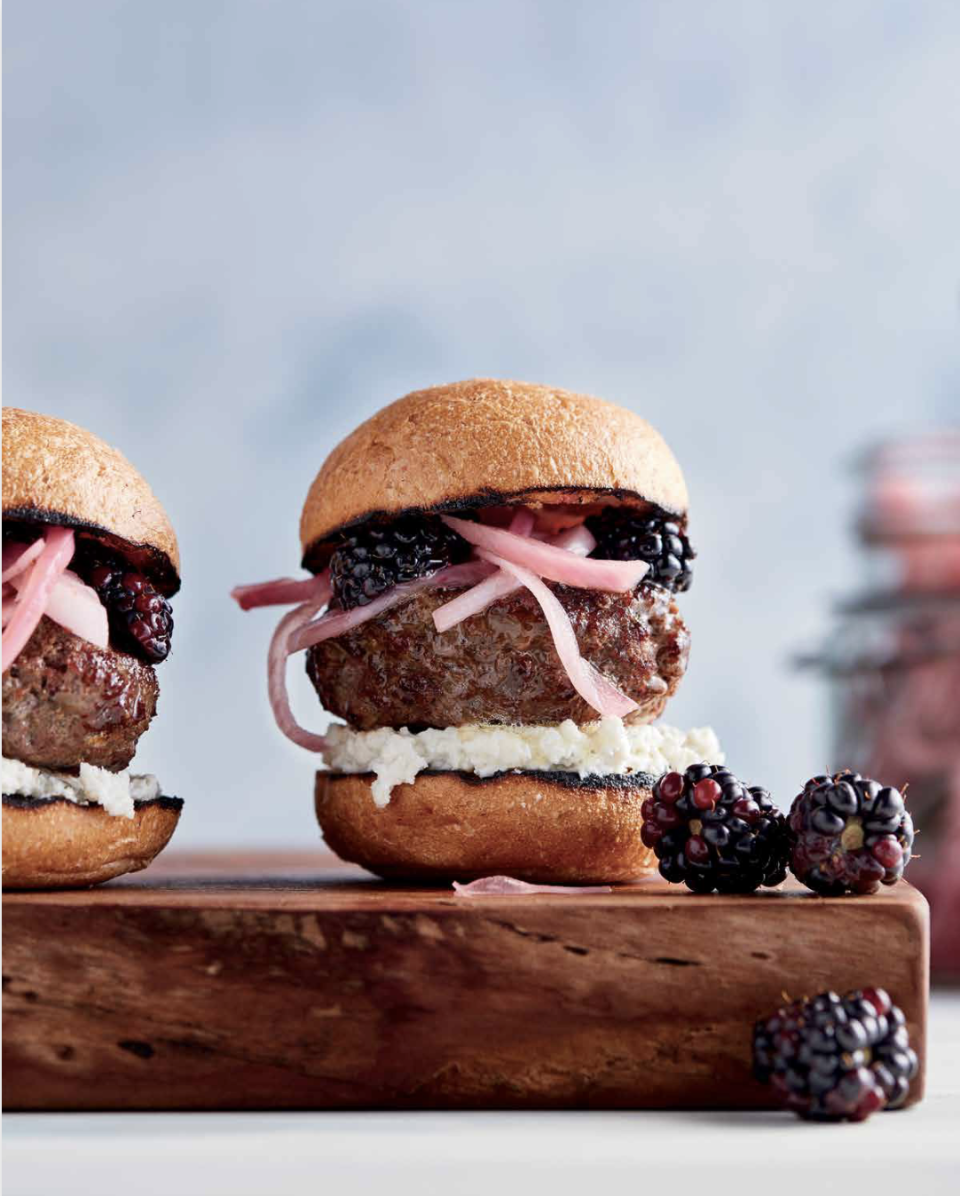College Dining Hall Food Has Become Super Fancy

"Hearst Magazines and Yahoo may earn commission or revenue on some items through these links."
As I get further into my 30s, there’s one TikTok trend that’s been giving me lower back pain. I’m not talking about the resurgence of early aughts fashion, but rather how kids today have all kinds of fancy dining options at colleges. More specifically, the elaborate food served at fraternities, sororities, and traditional dining halls. In some cases, dorm rooms have even turned into pop-up restaurants. Colleges have their own food trucks, and you can often find, completely standard, on-staff chefs making high-end food and towering stacks of croquembouche at Greek houses.
Sure, perhaps this obsession is very “Commuter Student at an Art School” of me, but where was all this when I was in college? Before I transferred to a school with better food, I attended a school in Florida where the eggs were not cracked in-house but instead pre-packaged and squeezed directly from a bottle. So I needed to know why and how food at college had become so luxurious.
The starkest difference between my college days and now is social media, of course. Instagram, which appeared halfway through my time in college, was just a grainy, over-filtered feed of sub-par latte art and pictures of your friends. You’d get seven likes per post, maximum, and feel little-to-no-envy over someone’s poorly-lit plate of Christmas food braggery.
But now, TikTok dorm room meals (featuring whole Christmas hams with 4.2 million likes), sorority chefs, and “What I Eat in a Day” viral videos are how we display our level of taste and peacock to others how good we have it.

With enrollment rates the lowest they’ve ever been, colleges are taking note of how dining can sway admissions. “With the rise of college rankings and the increasing importance of amenities in the college selection process, institutions are under pressure to enhance their dining offerings to remain competitive,” says Charles Wilcots, the assistant director of UCLA’s Dining & Housing Department. “This competition incentivizes colleges to invest in better quality ingredients, facilities, and culinary talent.”
Along with the absurd rate at which college tuition is rising, there’s an increase in student demand for better food in the dining halls. Some students are, in many ways, finally getting what they paid for. Cornell now has an entirely gluten- and tree-nut-free dining hall. A quarter of the food served by Duke University comes from local sources. Virginia Tech recently offered a four-course fine-dining Valentine’s Day meal.
Students are also now, more than ever, focused on wellness and eating more diverse cuisines. The time has come where students might weigh a college’s food over say, how good the football team is or how well-stocked the student gym is. Culinary school enrollments are also up, with more college students opting to learn how to cook over writing a thesis.

I’ve eaten at UCLA and Harvard dining halls thanks to some free guest swipes from friends, as well as at my alma mater, Emerson College. And what I’ve gathered about the best dining halls is no coincidence: The top-tier dining halls also have culinary and hospitality undergraduate programs, making for a symbiotic relationship with the rest of the school by association.
The stats line up, too: There’s a clear overlap of top-rated college dining programs in the U.S. to well-known hospitality and management programs, like UCLA, University of Georgia, UMass-Amherst, and Virginia Tech. Cornell’s School of Hotel Administration even has a collaborative degree program with the Culinary Institute of America and a food science program, which results in a magical collaboration: Cornell Dairy ice cream.
At UCLA, they’ve even adapted to present dishes with smaller plates with fanciful saucy swirls that mimic the styles popularized in fine-dining restaurants and offer themed feasts, This has led to grown adults buying swipes at schools they’re unaffiliated with as well as students sneaking into other schools’ superior dining halls. UCLA even opened a standalone restaurant, Plateia, that's open to the public (but not included in the dining plan). I’m not saying I wouldn’t go so far as to do that, but applying to graduate school to any of these fine-dining schools is now looking more appetizing to me.
You Might Also Like

